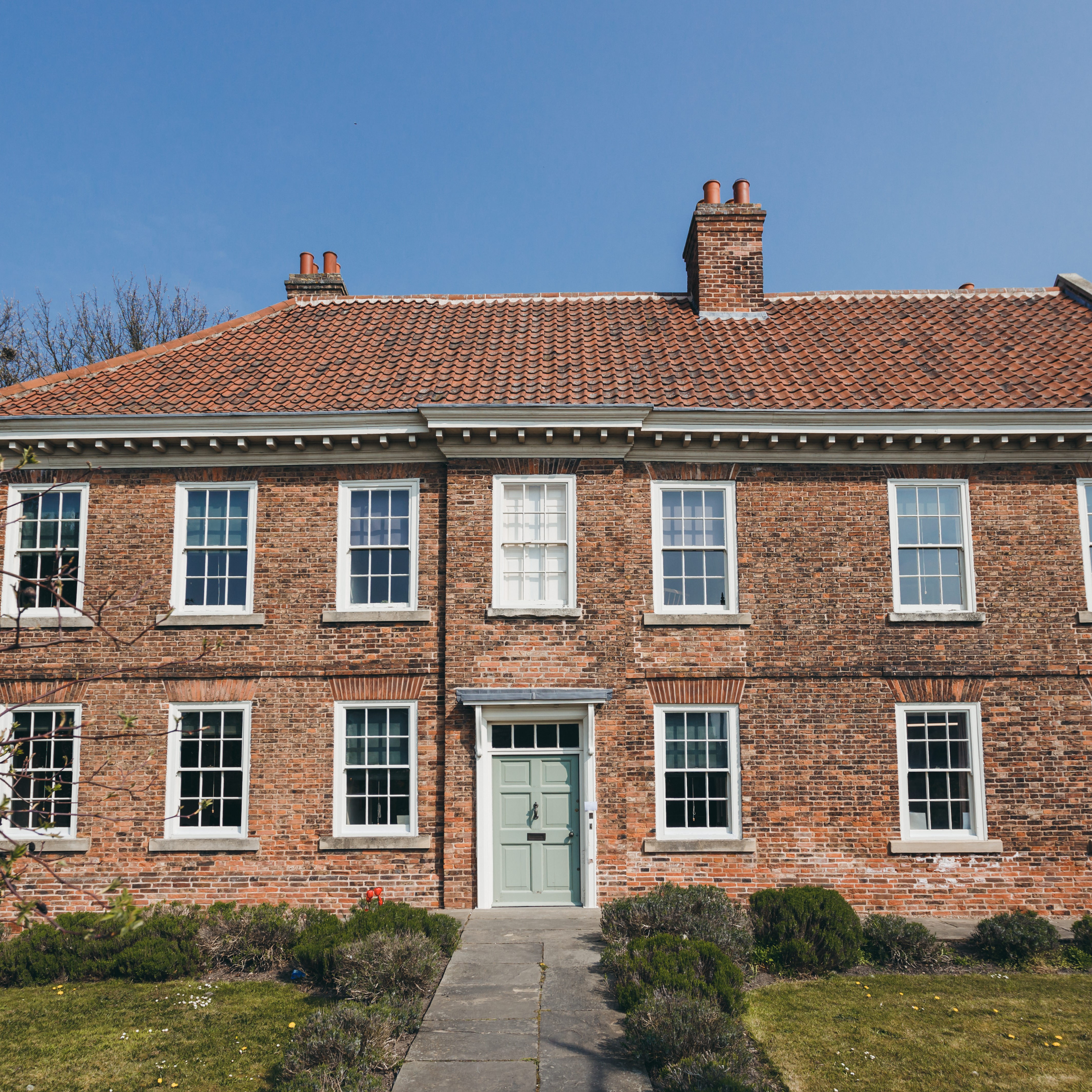The numbers listed under each plant are the number of the remedy as it appears in the 1780 edition of Primitive Physick.
Rhubarb (Rheum palmatum)
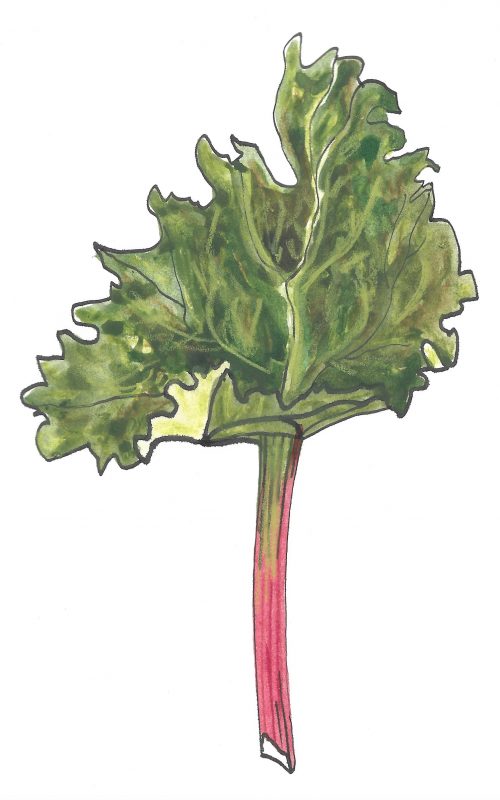 The precise origin of culinary rhubarb is unknown. The Chinese call rhubarb “the great yellow”, and have used rhubarb root for medicinal purposes. It appears in The Divine Farmer’s Herb-Root Classic, which is thought to have been compiled about 1,800 years ago.
The precise origin of culinary rhubarb is unknown. The Chinese call rhubarb “the great yellow”, and have used rhubarb root for medicinal purposes. It appears in The Divine Farmer’s Herb-Root Classic, which is thought to have been compiled about 1,800 years ago.
Wesley’s recommendations:
33 – Cholera Morbus – If the pain is very severe wrap the body with flannels dipped in spirits and water. The third day after the cure; take ten or fifteen grains of rhubarb.
205 – Small Pox – In many cases a gentle purge of manna, cream of tartar or rhubarb.
For Small Pox – After the incrustation is formed, change the sick, but let it be with very dry warm linen – DR HUXHAM
Other therapies
Rhubarb leaves contain TOXIC substances, including oxalic acid, which can lead to kidney stone formation. People have been poisoned after eating the leaves, a particular problem during World War I when the leaves were mistakenly recommended as a food source in Britain.
Ribwort Plantain (Plantago lanceolata)
Plantains leaves have been used for centuries all over the world as a remedy for wounds, bites, stings and problems related to the skin, and is referenced many times in writings from Chaucer and Shakespeare.
Wesley’s recommendations:
116 – A Flux – Take a spoonful of plantaine seed, bruised, morning and evening till it stops.
Other therapies
Plantain leaves are super-nutritious and loaded with vitamins and minerals. They are high in vitamins A, C, and K, as well as being a source of iron, calcium, and magnesium.
Turnip (brassica rapa)
Turnips are thought to originate in northern Europe around 2000 BC. Gerard’s Herball of 1597 suggests using the oil from the seed of turnips to kill worms in children. They were also used in a cure for coughs in the form of lightly fermented juice of sliced turnip. This apparently also worked for whooping cough.
Wesley’s recommendations:
205 – Small Pox – In violent cases, bleed in the foot; bathe the legs in warm water twice or thrice a-day before and at the eruption, and apply boiled turnips to the feet.
Other therapies
Besides being an important vegetable and source of oil, turnip is also used as a traditional medicine for the treatment of headaches, chest complaints, rheumatisms, oedemas, gonorrhoea, syphilis, and rabies.
Marseilles VinegarWhen the black plague ravaged Marseilles in the 17th century, French folklore says that a band of lucky grave robbers and thieves escaped the Black Death by dousing themselves in a strong herbal vinegar. Daring robberies of homes of the sick continued and the thieves remained untouched by illness, until eventually caught and imprisoned. In exchange for leniency, the thieves offered to surrender their secret vinegar recipe. The famous vinegar recipe was then posted on walls around Marseille. It included herbs such as garlic, lavender, rosemary, meadowsweet, sage, wormwood and spices – steeped in vinegar for a number of weeks. With its strong antiseptic and antibacterial properties (garlic, rosemary, spices, lavender) it is quite possible that the herbal concoction also had success as a natural flea repellent (wormwood, sage and camphor). As the reputation of this plague prevention spread, families began brewing their own versions, adapting the recipe, and passing it down through generations as a treasured heirloom.
Rue (Ruta graveolens)
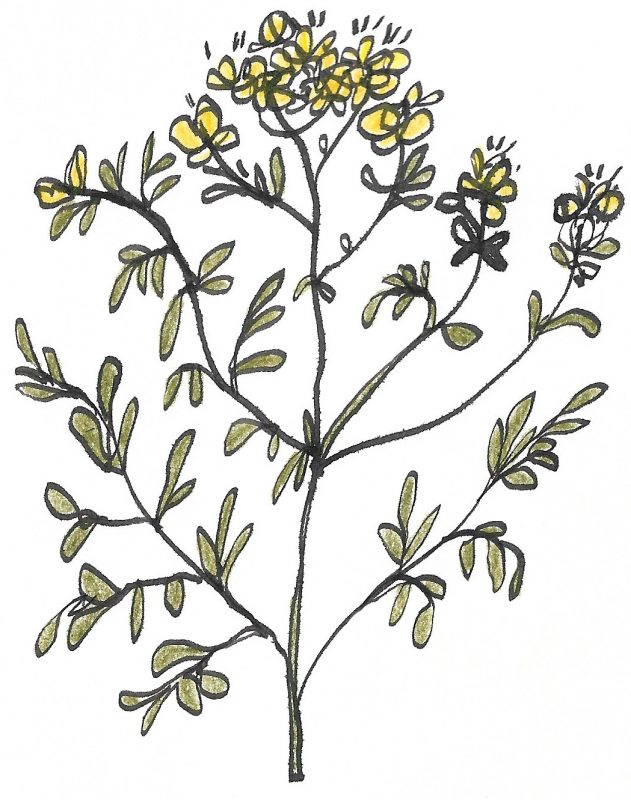 In ancient times, rue was an important culinary and medicinal herb. It’s mentioned in the Bible by its Greek name, peganon. The botanical, Latin name of Ruta comes from Greek, translated as “to set free,” referring to its use as a chief ingredient poison antidotes.
In ancient times, rue was an important culinary and medicinal herb. It’s mentioned in the Bible by its Greek name, peganon. The botanical, Latin name of Ruta comes from Greek, translated as “to set free,” referring to its use as a chief ingredient poison antidotes.
Wesley’s recommendations:
174 – The Plague (to prevent) – Marseilles Vinegar.
Other therapies
Rue has been used as an anti-inflammatory to treat cramps, external ulcers, rheumatism, eczema, and systemic infections; as an antidote for scorpion and snake venom; as an insect repellent; and as an herbal decoction for warding off evil spirits. It is also known to cause reddening, burning, itching and photodermatisis (sun poisoning rash) when rubbed on skin that has been exposed to sunlight. (TOXIC)
Wormwood (Artemisia absinthium)
The earliest historical reference to wormwood goes back to 2800BC and the Chinese emperor Shen-Nung, (also known as “The Divine Healer”), who apparently tasted every plant in China to see if the taste was good and to find out what was dangerous. Legend has it that during his research he was poisoned seventy-two times in a single day and yet amazingly suffered no long-term effects, however, alternative stories reveal that he turned green and died from toxic overdose! He is attributed with discovering that sweet wormwood cures Malaria.
Wesley’s recommendations:
116 – A Flux – Put a large brown toast in three quarts of water, with a drachm of cochineal, powdered and a drachm of salt of wormwood. Drink it all in as short a time as you conveniently can. This rarely fails to cure all fluxes, cholera morbus, yea and inflammation of the bowels.
174 – The Plague (to prevent) – Marseilles Vinegar.
Other therapies
Today wormwood is used as a mild sedative, to eliminate worms, increase stomach acidity and lower fever. It can help regain your appetite and enhances digestion and has also been used to treat liver, gastric gallbladder and vascular disorders and migraine.
Rosemary (Rosmarinus officinalis)
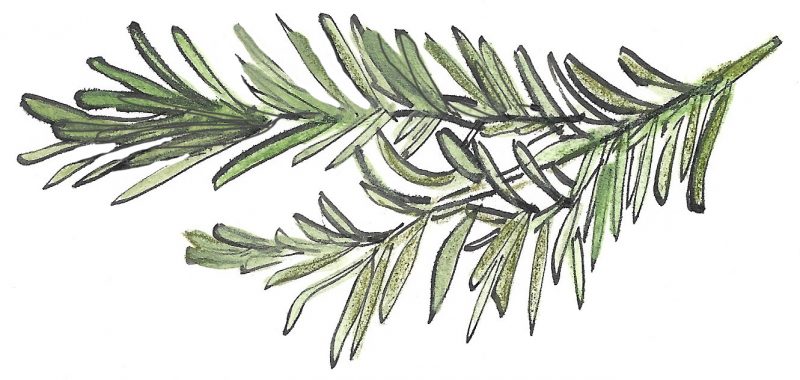 Rosemary has been used medicinally since the times of the ancient Greeks and Romans in 500 B.C. Legend has it that the Virgin Mary, mother of Jesus, as she fled from Egypt, sheltered next to a rosemary bush. She threw her blue cape onto the bush and the white flowers turned blue. Because of this, the herb has long been called “rose of Mary” even if the blooms look nothing like a rose but are rather more like the mint flowers to which rosemary is related.
Rosemary has been used medicinally since the times of the ancient Greeks and Romans in 500 B.C. Legend has it that the Virgin Mary, mother of Jesus, as she fled from Egypt, sheltered next to a rosemary bush. She threw her blue cape onto the bush and the white flowers turned blue. Because of this, the herb has long been called “rose of Mary” even if the blooms look nothing like a rose but are rather more like the mint flowers to which rosemary is related.
Wesley’s recommendations:
174 – The Plague (to prevent) – Marseilles Vinegar.
Other therapies
Rosemary has been used to cure baldness and dandruff as well as other skin ailments. If placed under a pillow it is said to to prevent nightmares and it was hung outside homes to thwart evil spirits.
To make hair grow wash it every night with a strong decoction of rosemary – JOHN WESLEY
Marigold (Calendula officinalis)
Calendula was used in historic times for headaches, red eye, fever and toothaches. Nicholas Culpeper claimed Calendula benefited the heart, but it was was more often used for magical purposes than medicinal ones. One 16th-century potion containing marigold claimed to reveal fairies.
Wesley’s recommendations:
174 – The Plague (to prevent) – Eat marigold flowers daily as a salad with oil and vinegar
175 – The Plague (to cure) – an ounce or two of the juice of marigolds
Other therapies
Marigold oil is still used medicinally as an anti-inflammatory and a remedy for healing wounds. Ointments are available as skin products for use on minor cuts, burns, and skin irritation.
Mint (Mentha)
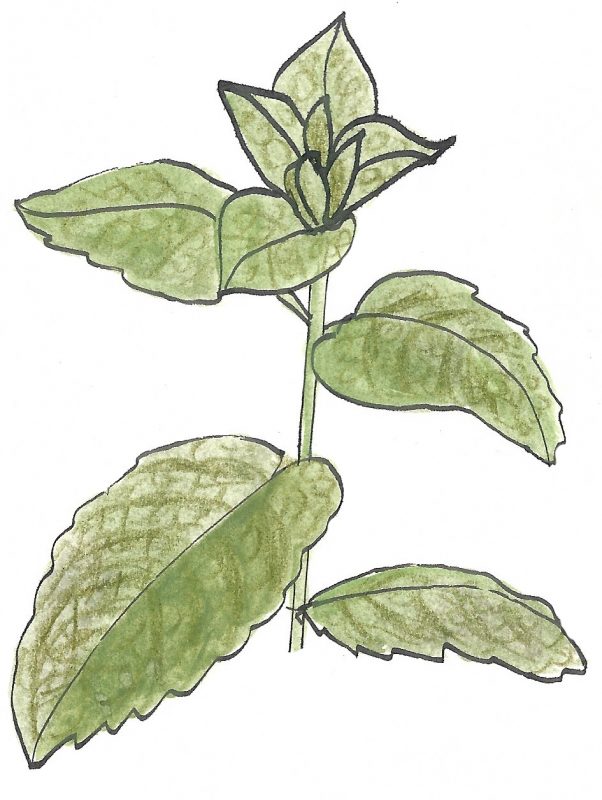 Mint was introduced to England by the Romans and is mentioned by John Gardiner, who published Feate of Gardening in 1440 as ‘myntys’. This publication is thought to be the earliest horticultural work in the English language and was written in verse. In the 14th Century it is found in early versions of toothpaste and used for whitening teeth. Turner (1508 – 1568), who was known as the Father of British Botany, believed it was good for ‘ye stomack’ and Culpepper (1616 – 1654), used mint to treat almost 40 different ailments.
Mint was introduced to England by the Romans and is mentioned by John Gardiner, who published Feate of Gardening in 1440 as ‘myntys’. This publication is thought to be the earliest horticultural work in the English language and was written in verse. In the 14th Century it is found in early versions of toothpaste and used for whitening teeth. Turner (1508 – 1568), who was known as the Father of British Botany, believed it was good for ‘ye stomack’ and Culpepper (1616 – 1654), used mint to treat almost 40 different ailments.
Wesley’s recommendations:
174 – The Plague (to prevent) – Marseilles Vinegar.
Other therapies
Menthol helps to relieve pain when applied topically as it activates cold-sensitive receptors in the skin and mucous membranes, creating a soothing cooling effect. It’s commonly used in pain-relief balms, cough suppressants, and steam inhalation for congestion. Beyond pain relief, menthol has a gentle anesthetic effect and is used to treat migraines and muscle tension.
Sage (Salvia officinalis)
The Egyptians, Greeks, and Romans, recognized sage for its healing capabilities, using it to treat digestive issues, respiratory ailments, and enhance cognitive function. The Emperor Nero’s physician Dioscorides used it as a decoction on wounds to stop bleeding, for ulcers, and as a tea for sore throats and hoarseness.
“The juice of Sage, drunk with vinegar, hath been of good use in time of the plague at all times. Gargles likewise are made with Sage, rosemary, honey-suckles, and plantain, boiled in wine or water, with some honey or allum put thereto, to wash sore mouths and throats, cankers, or the secret parts of man or woman, as need requires” – THOMAS CULPEPPER
Wesley’s recommendations:
174 – The Plague (to prevent) – Marseilles Vinegar
Other therapies
Taking common sage extract is thought to improve some symptoms of menopause, especially hot flashes, night sweats, and sleep problems. People also use sage for memory and thinking skills, and high cholesterol. It is also used for pain after surgery, lung cancer, sore throat, sunburn, and many other conditions.
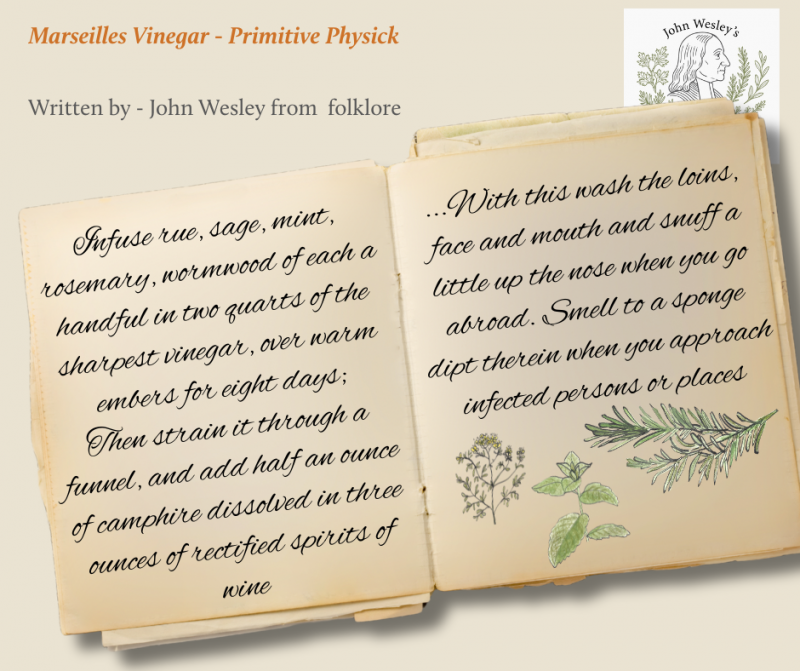
Chicory (Cichorium intybus)
Chicory is commonly found alongside roads and in other disturbed natural habitats, recognized by the blue flowers that bloom along the length of its stems. The roots of chicory plants have traditionally been used to treat a range of ailments, including digestive issues and a loss of appetite.
Wesley’s recommendations:
3 – A Double Tertian Ague – Take before the fit (after a purge or two) three ounces of cichory water, half a drachm of salt of tartar and fifteen drops of spirit of Sulphur. To perfect the cure, on the fourth day after you miss a fit, take two drachms of senna, half a drachm of salt of tartar infused all night in four ounces of cichory (sic) water.
“A Quartan Ague – use strong exercise (as riding or walking as far as you can bear it) an hour or two before the fit. This alone will frequently cure” – JOHN WESLEY
Other therapies
Today chicory is thought to have a wide range of benefits including improving liver health, digestion, diabetes, and heart health. It also has has anti-inflammatory properties that can help with joint pain and arthritis.
Poppy (Papaver)
Poppy plants have been used for centuries for their medicinal properties. The most well-known poppy plant is the opium poppy, which is the source of the drug opium. Opium is a highly addictive substance and has been used as a painkiller for millennia. Other poppy plants, such as the Papaver somniferum, are also used to make drugs like codeine and morphine.
Wesley’s recommendations:
2 – For an Ague – Dr. Lind says, an ague is certainly cured by taking from ten to twenty drops of laudanum, with two drachms of syrup of poppies, in any warm liquid half an hour after the heat begins.
Other therapies
Poppy seeds are rich in oil, carbohydrates, calcium and protein. Poppy oil is often used as cooking oil, salad dressing oil, or in products such as margarine.
Tansy (Tanacetum vulgare)
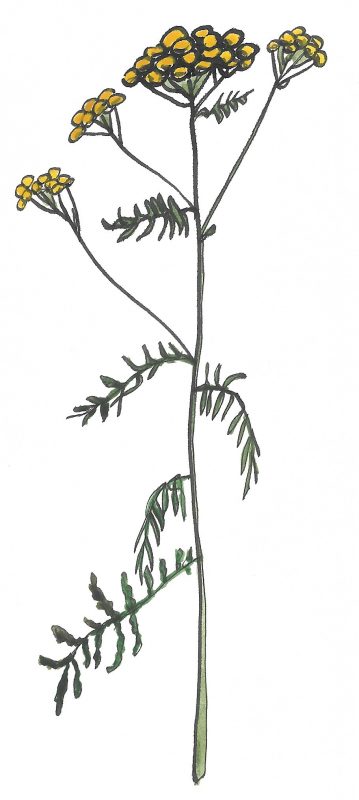 The Ancient Greeks were the first that mention Tansy as a medicine. Its common name is derived from the Greek word for immortality Athanasia – in Greek mythology Zeus gave the shepherd Ganymede a drink of tansy to make him immortal. The main use of tansy in medieval times was as an insect repellent – the stems were collected and dried in August. They were then used as strewing herbs on the floor (along with meadowsweet), put between mattresses and sheets to deter lice, and made into a rub for raw meat to stop flies.
The Ancient Greeks were the first that mention Tansy as a medicine. Its common name is derived from the Greek word for immortality Athanasia – in Greek mythology Zeus gave the shepherd Ganymede a drink of tansy to make him immortal. The main use of tansy in medieval times was as an insect repellent – the stems were collected and dried in August. They were then used as strewing herbs on the floor (along with meadowsweet), put between mattresses and sheets to deter lice, and made into a rub for raw meat to stop flies.
Wesley’s recommendations:
119 – The Gout in the Stomach – Boil a pupil (a pugil is as much as you can take up between your thumb and two fore-fingers) of tansy in a quarter of Mountain wine. Drink it in bed
Other therapies
Tansy’s uses span from digestive support and parasite expulsion to skin care and anti-inflammatory therapy. It is used as a detoxifying agent, supporting the liver’s natural cleansing processes and is reputed to have mild sedative and mood-enhancing properties.
Onion (Allium cepa)
Roman physicians prescribed onions to treat colds, sore throats, and other respiratory conditions. They believed the strong smell and taste of onions could clear blocked airways. Additionally, onions were used to promote digestion, and some believed they could cure hangovers. In the medieval period onions were used to treat more serious illnesses such as the plague.
Wesley’s recommendations:
2 – For an Ague – Apply to the stomach a large onion – slit
“Nothing tends more to prolong an ague than indulging a lazy, indolent disposition” – JOHN WESLEY
Other therapies
Modern research has shown that onions are packed with nutrients and health benefits. They contain antioxidants and sulfur, which may help prevent infections and reduce inflammation. Onions are also rich in vitamins and minerals, such as vitamin C, potassium, and fiber, which support a healthy immune system and digestion.



